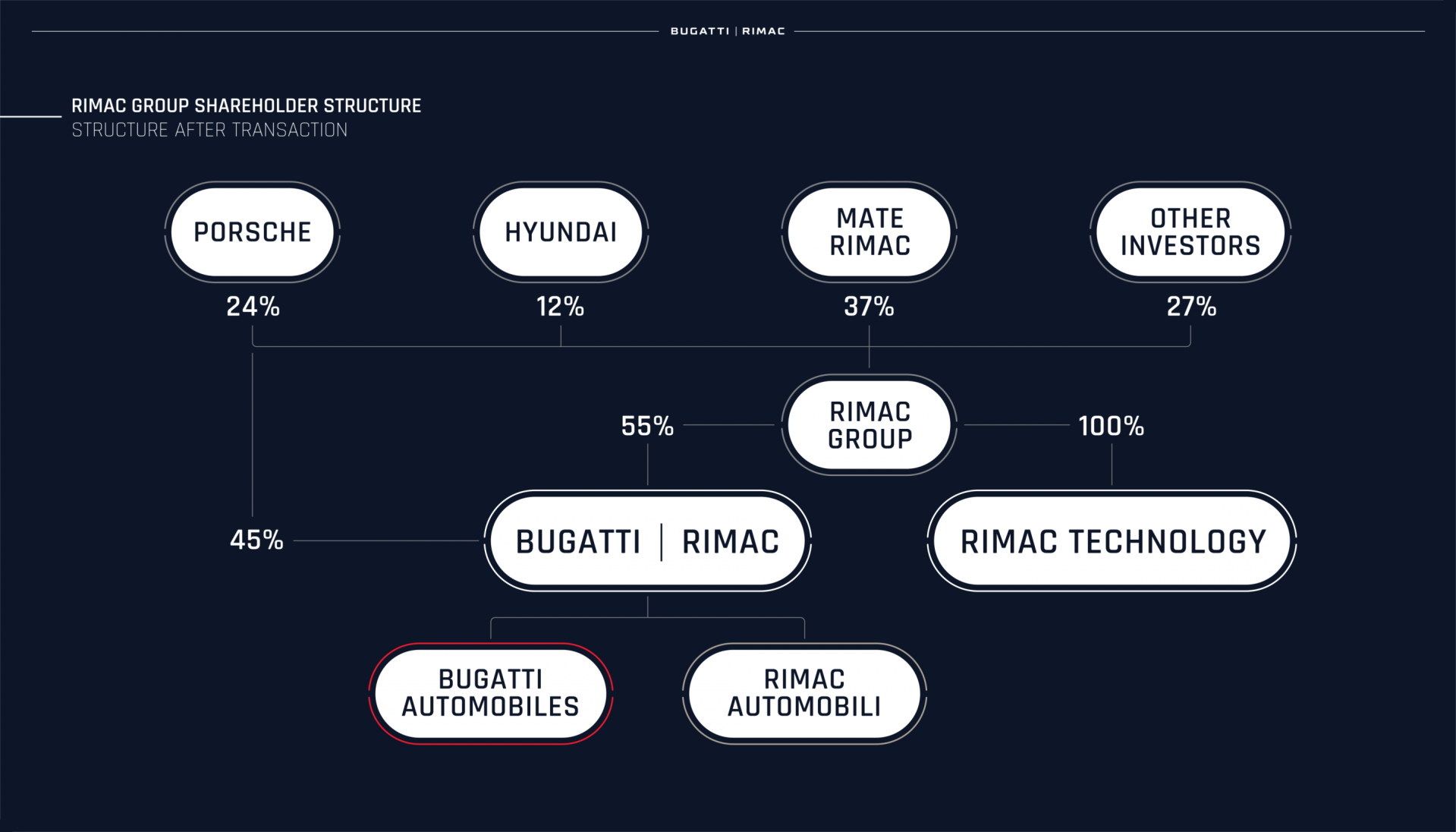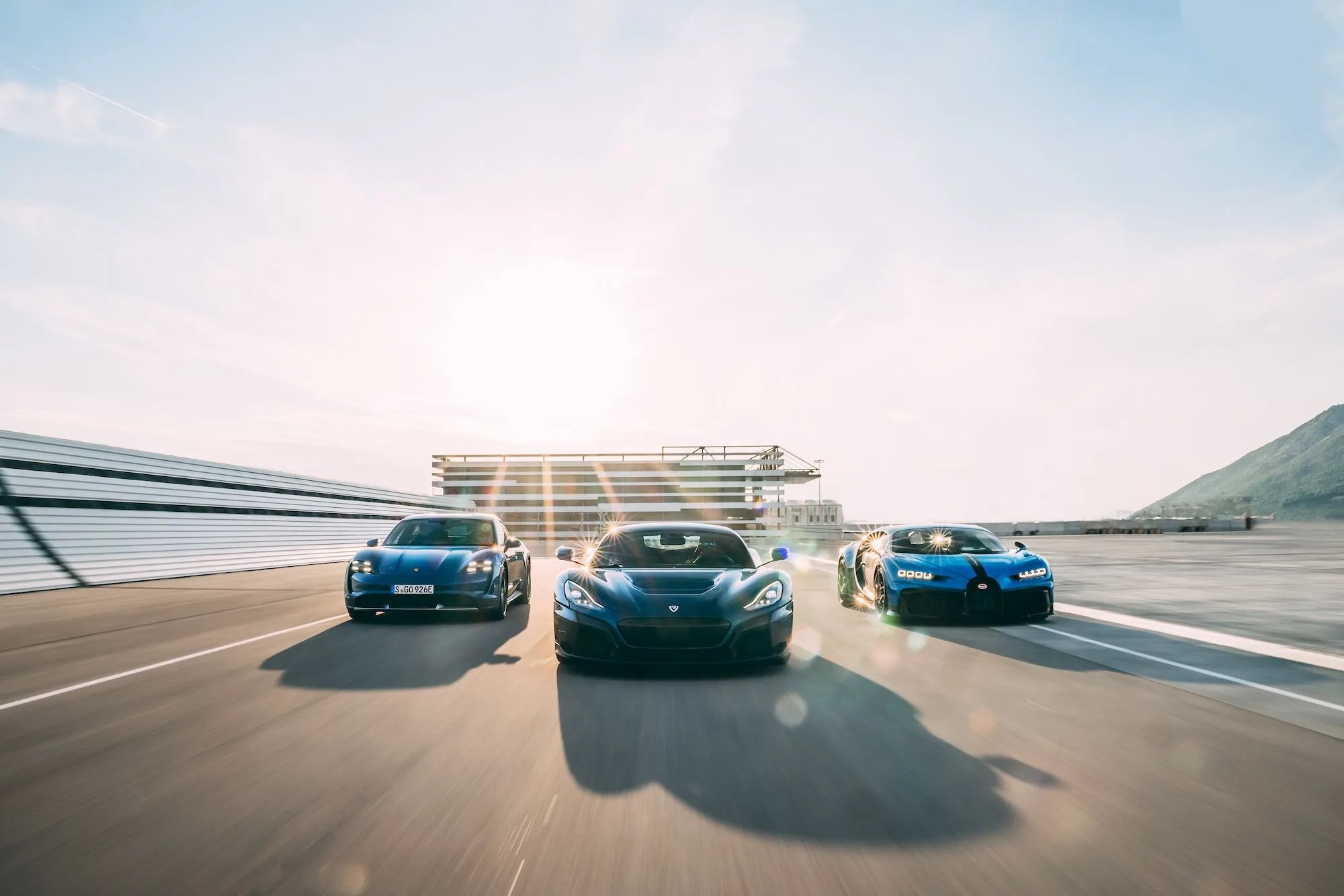It’s a match made in heaven — at least, if you’re excited about the prospect of ever-faster, ever-quicker hypercars surviving and thriving well into the 21st Century. On Monday, up-and-coming Croatian automaker Rimac Automobili announced they’re merging with none other than Bugatti — and effectively taking control of one of the most iconic brands in the automotive realm.
This means that Rimac founder Mate Rimac, the 33-year-old electric vehicle engineer who started out in the automotive world by swapping an electric motor into his E30 BMW track car, has now been handed the reins of the prestigious company that builds the world’s fastest, most expensive cars. Granted, he’s not gaining absolute control. The structure of the deal is a little complex, but in a nutshell: The company formerly known as Rimac Automobili has become the Rimac Group, which consists of two subsidiaries, Rimac Technologies (which will keep on developing electric vehicle tech for other companies) and Bugatti Rimac, which in turn will produce vehicles under the Rimac and Bugatti brands.
Bugatti Rimac, however, is only 55 percent owned by the new Rimac Group. Porsche — Bugatti’s recently-appointed patron within the VW Group — owns the other 45 percent. What makes things a little odd is the fact that Porsche also opens 24 percent of the Rimac Group, making it the second-largest shareholder behind Mate Rimac himself (and ahead of Hyundai, which has 12 percent of the company).

While both Bugatti and Rimac will stay in their current homes of Molsheim, France and Zagreb, Croatia respectively for now, come 2023, development and operations for both brands will be consolidated at the future Rimac Campus, a 1.07-million-square foot complex near Rimac’s current HQ.
The move comes hot on the heels of the launch of Rimac’s latest car, the Nevera, which has launched to critical acclaim for its appearance, technology…and the fact that it can crack off sub-10-second quarter-mile times as casually as you or I would walk to the kitchen for another cup of coffee.


